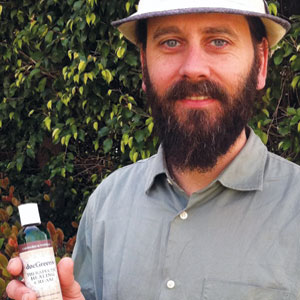

As the clintele of medical marijuana collectives grows, operators are noticing a new niche market: patients who want the therapeutic relief of getting high without feeling high.
Sticky and stinky buds as well as increasingly popular “concentrates,” such as bubble hash or honey hash oil, continue to be the most common method of ingestion—set fire, inhale.
Edibles, or “Medibles,” have long been the only alternative to smoking, but the ubiquitous marijuana-infused brownies, cookies and candies have their own drawbacks.
Many “canna-foods” are made by infusing the essential components of cannabis—Tetrahydrocannabinol (THC) and other cannabinoids—into regular butter and then using that “canna-butter” to impart its medicinal properties into the end product.
Edibles are perishable, though, meaning that the quality of both taste and effectiveness diminish fairly rapidly, depending on variables such as packaging, handling and storage environment. Equally inconsistent, dosages can be imprecise from product-to-product, producer-to-producer.
Recently, however, an emerging trend is topicals, which patients and providers say can offer relief without the reek. “We are seeing more and more new patients coming in because they have heard about different ways to get relief from cannabis, other than smoking” says SFBay THC’s Dr. Rita Thakur, who prescribes cards in Milpitas.
Thakur says that not only are new patients who have never smoked using this alternative but that other lifelong smokers are also finding that the topical forms of medical cannabis, or lotions, can provide more targeted relief.
Doc Green’s Healing Collective produces a line of healing creams featured at several South Bay dispensaries. “Our topical lotions are one of the best examples of the medicinal qualities of cannabis,” says Daniel Kosmal, president of Doc Green’s. “You don’t get high from the lotion, but you will experience nearly instant pain relief if rubbed on the joints for arthritis or into muscles to relieve soreness and cramps.”
One San Jose–based company taking a different approach to serving up marijuana’s beneficial cannabinoids is Tetra Labs, creator of Goldmist Sublingual Spray. The product removes the vast majority of plant material and impurities to produce one of the purest forms of medicinal cannabis on the market.
The amber-colored extracts are available in gel cap and oil forms, but the sublingual spray is receiving the most attention from dispensaries. Tetra claims that a spritz of the cinnamon-flavored mist under the tongue allows the user to know within 15 minutes whether or not their dosage is sufficient for the desired effects.
Goldmist is also packaged in a discreet-looking spray mister which can be easily be tucked into a pocket or purse. This proves to be especially popular for “upscale” or “nontraditional” patients.
“Silicon Valley is doing what it has always done. It focuses on customers and builds businesses and business models around their needs,” says Vanessa Ellis, president of the Silicon Valley–based marketing firm the Velocity Group. “There is a large and diverse customer base for medical cannabis in the bay area and intense competition amongst providers. That makes successes and failures happen more rapidly, which leads to better development of products and market segments.”
It appears the marketplace has found a way to make one of the oldest medicines in the world new again.



